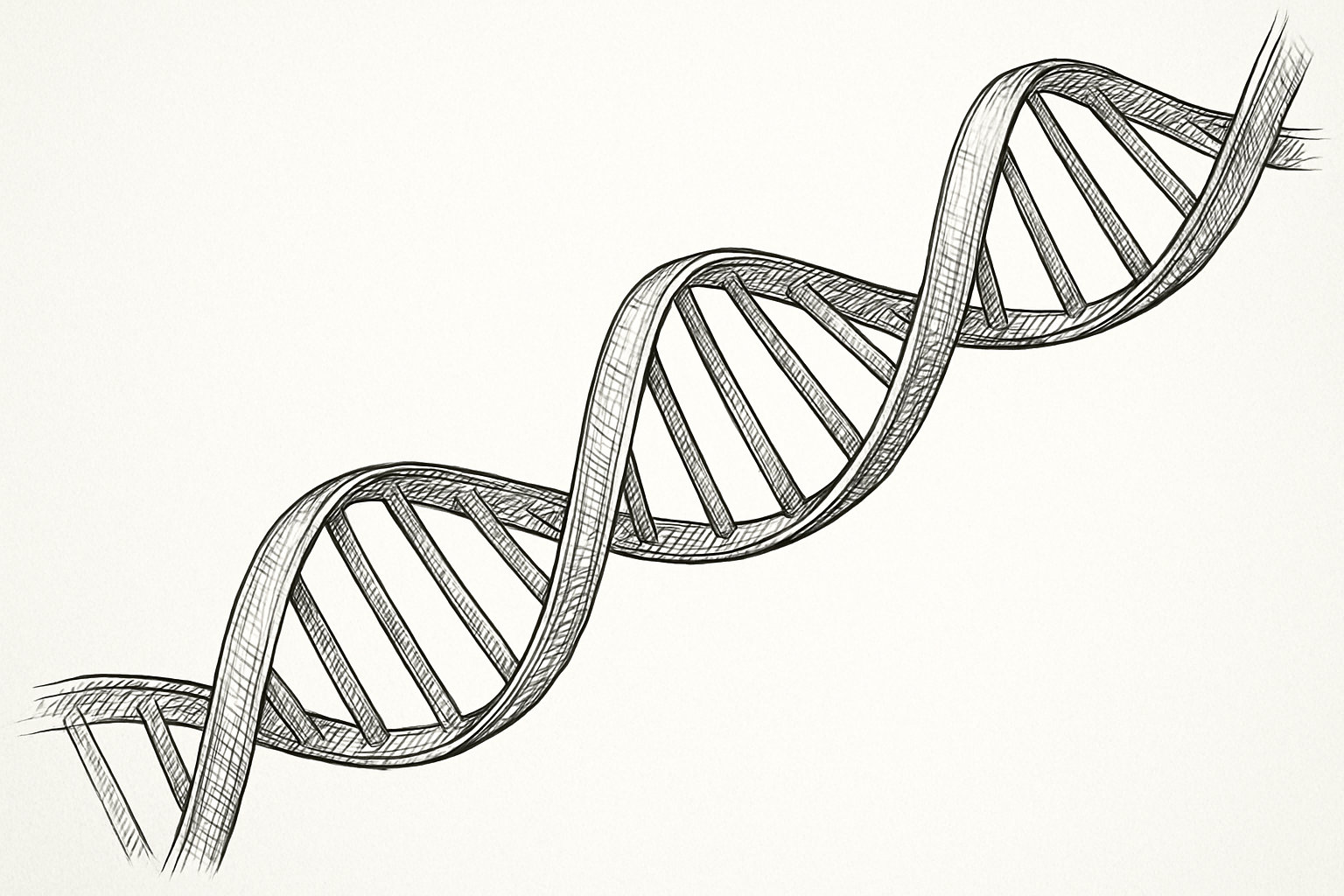If you’re interested in self-sufficiency and growing your own crops, you might be surprised how understanding DNA and genetic inheritance can help.
While the basics covered below only scratch the surface, they serve as an important foundation for understanding biodiversity and the risks of monoculutres.
The overlap with other subjects makes it a good addition to interdisciplinary thinking.
What is DNA?
DNA is made up of nucleotides, the basic building blocks of nucleic acids. Simply put they are deoxyribose sugar, phosphate and one of four nitrogen containing bases: adenine, cytosine, guanine and thymine (A, C, G, T).
The sugar and phosphate form strands, which the nitrogenous bases extend from to connect to another base, creating the double helix structure of DNA.
Between the bases, adenine will always link with thymine and cytosine with guanine to create base pairs.
The base pairs are formed via covalent hydrogen bonds; A-T has two bonds and C-G three.
How does DNA encode information?
The complete set of genetic information in an organism is called a genome.
Within the genome are the strands formed by the nucleotides. DNA encodes genetic instructions through the specific sequence of its nitrogenous bases.
This information is what provides the instructions to cells to perform functions necessary to life.
Cells & Protein Production
Proteins are important for many biological processes, performing most of the work completed by cells.
DNA contains instructions for building the proteins required by cells in order to survive.
Through a process called transcription, a segment of DNA is converted into messenger RNA (mRNA), which then undergoes translation to produce a functional protein.
The purpose of the protein will depend on the function that the cell performs within the organism.
An Introduction to Natural Selection
Considered the primary driver of evolution, natural selection refers to the process where organisms that survive and produce offspring are those that have adapted better to their environment.
Genotypes and Phenotypes
The genotype of an organism refers to all the genes that it carries.
An organism’s, phenotype on the other hand, is all of its observable characteristics. Phenotype can be influenced by both the genotype and by environmental factors such as diet or climate.
Variation & Adaptation
Variation refers to the genetic diffrences that exist between a species.
It can be caused by mutations — changes in the DNA sequence. These are usually limited to individual organisms unless they occur in germline cells (sperm or egg), in which case they can be passed to offspring.
Genetic drift, a random change in the frequency of gene variants, can also lead to certain traits becoming more or less common in a population, even without a clear advantage or disadvantage.
If a variation is beneficial, over time it could become a permanent adaptation to suit the environment that the organism live in.
What is inheritance
Inheritance is the process by which genes are passed from one generation to the next. Each offspring inherits 50% of their DNA from each parent, but the specific combination of genes varies, resulting in genetic diversity among siblings.
